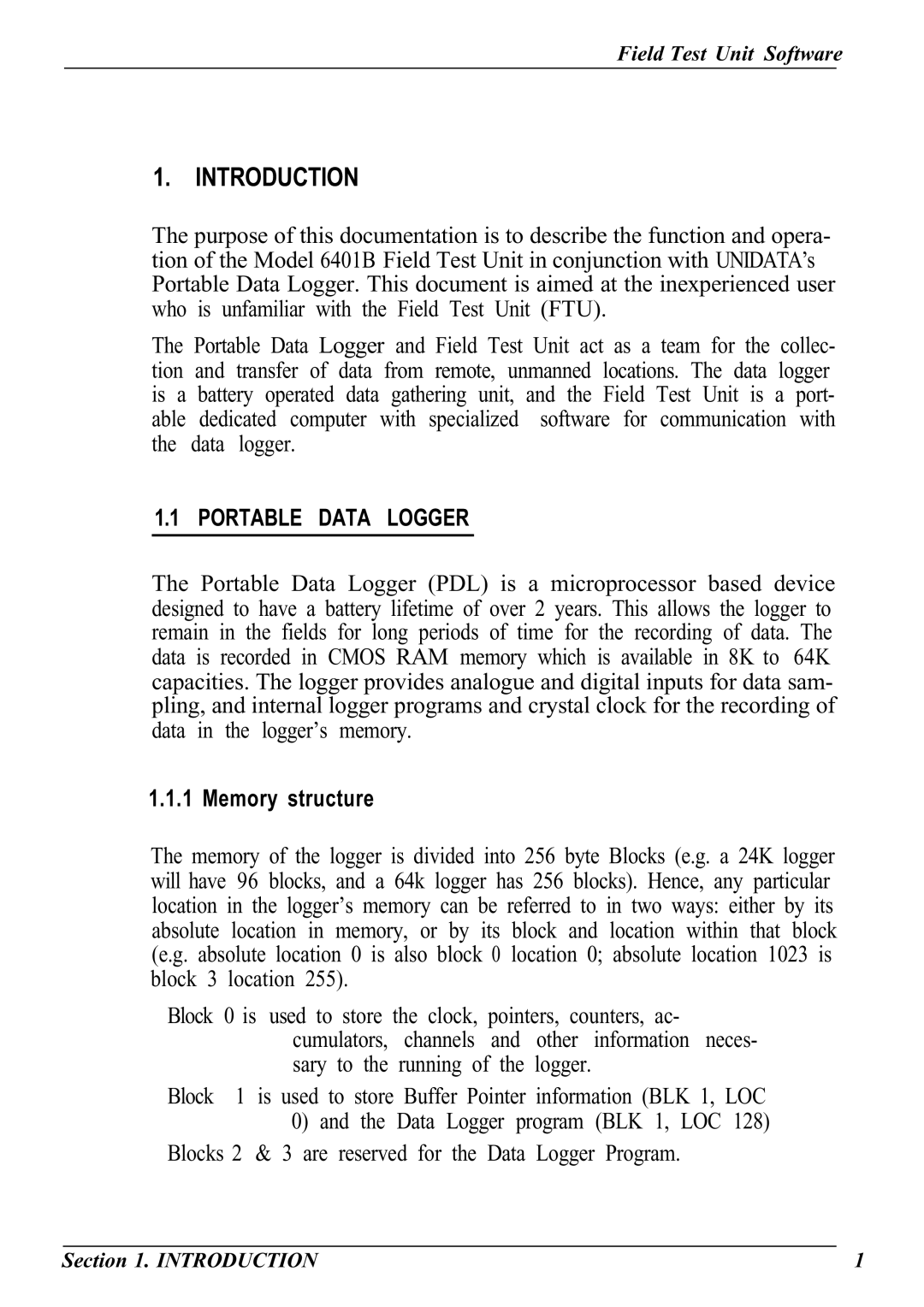
Field Test Unit Software
1. INTRODUCTION
The purpose of this documentation is to describe the function and opera- tion of the Model 6401B Field Test Unit in conjunction with UNIDATA’s Portable Data Logger. This document is aimed at the inexperienced user who is unfamiliar with the Field Test Unit (FTU).
The Portable Data Logger and Field Test Unit act as a team for the collec- tion and transfer of data from remote, unmanned locations. The data logger is a battery operated data gathering unit, and the Field Test Unit is a port- able dedicated computer with specialized software for communication with the data logger.
1.1 PORTABLE DATA LOGGER
The Portable Data Logger (PDL) is a microprocessor based device designed to have a battery lifetime of over 2 years. This allows the logger to remain in the fields for long periods of time for the recording of data. The data is recorded in CMOS RAM memory which is available in 8K to 64K capacities. The logger provides analogue and digital inputs for data sam- pling, and internal logger programs and crystal clock for the recording of data in the logger’s memory.
1.1.1 Memory structure
The memory of the logger is divided into 256 byte Blocks (e.g. a 24K logger will have 96 blocks, and a 64k logger has 256 blocks). Hence, any particular location in the logger’s memory can be referred to in two ways: either by its absolute location in memory, or by its block and location within that block (e.g. absolute location 0 is also block 0 location 0; absolute location 1023 is block 3 location 255).
Block 0 is used to store the clock, pointers, counters, ac- cumulators, channels and other information neces- sary to the running of the logger.
Block 1 is used to store Buffer Pointer information (BLK 1, LOC
0)and the Data Logger program (BLK 1, LOC 128) Blocks 2 & 3 are reserved for the Data Logger Program.
Section 1. INTRODUCTION | 1 |
